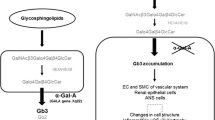Abstract
Adult polyglucosan body disease (APBD) is a rare glycogenosis manifesting progressive spastic paraparesis, sensorimotor polyneuropathy and neurogenic bladder. Misdiagnosis of APBD may lead to unnecessary investigations and to potentially harmful therapeutic interventions. To examine the frequency of misdiagnosis of APBD, we retrospectively reviewed the clinical data of 30 patients diagnosed between 1991 and 2013. Diagnosis was based on the combination of typical clinical and imaging findings, reduced glycogen branching enzyme activity, and the presence of p.Y326S GBE1 mutation. Initial symptoms started in the 5th–6th decade with bladder dysfunction (47 %), gait problems (33 %) or both. Diagnosis of APBD was delayed by 6.8 (±4.8) years. Consistent signs at diagnosis were spasticity in the legs (93 %), decreased or absent ankle reflexes (100 %), bilateral extensor plantar response (100 %) and distal sensory deficit (80 %). Nerve conduction study showed invariable sensorimotor polyneuropathy, and MRI demonstrated cervical spinal cord atrophy (100 %) and leukoencephalopathy (97 %). All 30 patients were initially misdiagnosed. Common misdiagnoses included cerebral small vessel disease (27 %), multiple sclerosis (17 %), amyotrophic lateral sclerosis (17 %) and peripheral neuropathies (20 %). Consequently, 27 % received inappropriate therapy. In addition, lower urinary tract symptoms in 60 % of men were attributed solely to prostatic disorders but did not respond to medical treatment or prostatectomy. These findings suggest that despite limited clinical variability, APBD is invariably misdiagnosed and patients are often mistreated. Physicians’ unfamiliarity with the typical clinical and imaging features of APBD appears as the main reason for misdiagnosis.

Similar content being viewed by others
References
Robitaille Y, Carpenter S, Karpati G, DiMauro SD (1980) A distinct form of adult polyglucosan body disease with massive involvement of central and peripheral neuronal processes and astrocytes: a report of four cases and a review of the occurrence of polyglucosan bodies in other conditions such as Lafora’s disease and normal ageing. Brain 103:315–336
Lossos A, Meiner Z, Barash V et al (1998) Adult polyglucosan body disease in Ashkenazi Jewish patients carrying the Tyr329Ser mutation in the glycogen branching enzyme gene. Ann Neurol 44:867–872
Mochel F, Schiffmann R, Steenweg ME et al (2012) Adult polyglucosan body disease: natural history and key magnetic resonance imaging findings. Ann Neurol 72:433–441
Krim E, Vital A, Macia F, Yekhlef F, Tison F (2005) Atypical parkinsonism combining alpha-synuclein inclusions and polyglucosan body disease. Mov Disord 20:200–204
Boulan-Predseil P, Vital A, Brochet B, Darriet D, Henry P, Vital C (1995) Dementia of frontal lobe type due to adult polyglucosan body disease. J Neurol 242:512–516
McDonald TD, Faust PL, Bruno C, DiMauro S, Goldman JE (1993) Polyglucosan body disease simulating amyotrophic lateral sclerosis. Neurology 43:785–790
Billot S, Herve D, Akman HO et al (2013) Acute but transient deterioration revealing adult polyglucosan body disease. J Neurol Sci 324:179–182
Paradas C, Akman HO, Ionete C et al (2014) Branching enzyme deficient. Expanding the clinical spectrum. JAMA Neurol 71:41–47
Akman HO, Kakhlon O, Coku J et al (2014) Deep intronic GBE1 mutation in manifesting heterozygous patients with adult polyglucosan body disease. JAMA Naurol 72:441–445
Hussain A, Armistead J, Gushulak L et al (2012) The adult polyglucosan body disease mutation GBE1 c.1076A>C occurs at high frequency in persons of Ashkenazi Jewish background. Biochem Biophys Res Commun 426:286–288
Lossos A, Klein CJ, McEvoy KM, Keegan BM (2009) A 63-year-old woman with urinary incontinence and progressive gait disorder. Neurology 72:1607–1613
Pantoni L (2010) Cerebral small vessel disease: from pathogenesis and clinical characteristics to therapeutic challenges. Lancet Neurol 9:689–701
Alter M, Kahana E, Zilber N, Miller A (2006) Multiple sclerosis frequency in Israel’s diverse populations. Neurology 66:1061–1066
Rice CM, Cottrell D, Wilkins A, Scolding NJ (2013) Primary progressive multiple sclerosis: progress and challenges. J Neurol Neurosurg Psychiatry 84:1100–1106
Kim H-J, Jeon BS, Jellinger KA (2015) Diagnosis and differential diagnosis of MSA: boundary issues. J Neurol. doi:10.1007/s00415-015-7654-2
Flanagan EP, Krecke KN, Marsh RW et al (2014) Specific pattern of gadolinium enhancement in spondylotic myelopathy. Ann Neurol 76:54–65
Lepor H (2004) Pathophysiology, epidemiology, and natural history of benign prostatic hyperplasia. Rev Urol 6(S9):3–10
Acknowledgments
Dr. Kakhlon is supported in part by the Adult Polyglucosan Body Disease Research Foundation research grant for studies in APBD and in part by the AFM (Association Française contre les Myopathies)-Telethon Grant for studies in neuropolyglucosanoses. Dr. Giladi incumbents the Sieratzki Chair in Neurology.
Author information
Authors and Affiliations
Corresponding author
Ethics declarations
Conflicts of interest
The authors report no conflicts of interest. Funders of Dr. Kakhlon’s research had no role in the design and conduct of the study, collection and interpretation of the data, and preparation or approval of the manuscript.
Ethical standard
The study was approved by the Hadassah-Hebrew University Medical Center Institutional Review Board, and patients gave their informed consent prior to their inclusion in the study.
Rights and permissions
About this article
Cite this article
Hellmann, M.A., Kakhlon, O., Landau, E.H. et al. Frequent misdiagnosis of adult polyglucosan body disease. J Neurol 262, 2346–2351 (2015). https://doi.org/10.1007/s00415-015-7859-4
Received:
Revised:
Accepted:
Published:
Issue Date:
DOI: https://doi.org/10.1007/s00415-015-7859-4




